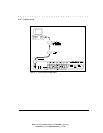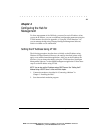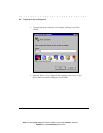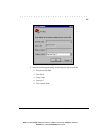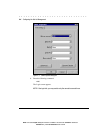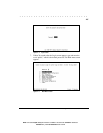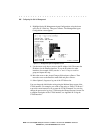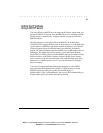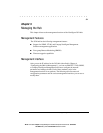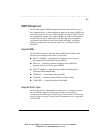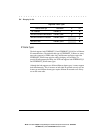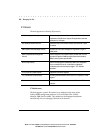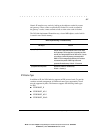
. . . . . . . . . . . . . . . . . . . . . . . . . . . . .
4-7
Netelligent 2724/2824 10/100Base-T Hub User Guide
Writer:
Chris Seiter
Project:
Netelligent 2724/2824 10/100Base-T Hub User Guide
Comments:
299440-001
File Name:
2824_4.DOC
Last Saved On:
6/25/97 5:03 PM
Setting the IP Address
Using a BOOTP Server
You can configure a BOOTP server to supply the IP address, subnet mask, and
gateway IP address for the hub. Once the BOOTP server is configured with the
desired settings, it automatically configures the hub in response to the hub’s
BOOTP requests.
The 2824 hub has two boot phases: Boot and Runtime. In the Boot phase
(STATUS LED is orange), the hub issues as many requests as are defined in the
cpqnBootpRetries MIB object The default number of requests is two. The hub
issues the requests using two different frame types (Ethernet_II and 802.2
SNAP). The interval between requests is defined in the cpqnBootpRetryInterval
MIB object. The default request retry interval is 5 seconds. In the Runtime
phase (STATUS LED is green) and when BOOTP requests are enabled and the
hub does not have an IP address currently assigned, the hub issues requests
every 5 minutes using only one frame type (same as the IP frame type). If the
hub receives a response from the server, it uses the information to configure
itself accordingly.
You can use Compaq Netelligent Management Software (or other SNMP
network management application) or the hub’s VT100 interface to disable
BOOTP requests by setting the cpqnBootEnable MIB object to
disable-bootp(1). This is recommended if you use only IPX communication, as
it helps reduce unnecessary traffic generated by the hub.



